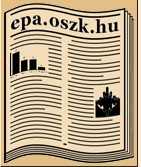Working Paper on the Hungarian Translation of the Libretto of the Opera María de Buenos
Abstract
This paper details a Hungarian translation of the libretto of the Argentine opera María de Buenos Aires, commissioned by a theatre and undertaken by the author. This unrhymed version represents a complete departure from a 2014 rhymed version produced by a team of literary translators. The plot of the work is highly surreal and the language is obscure at several points due to unusual syntactic structures and the poet’s coinages, which is why most native speakers find the text difficult to understand. The primary strategy underlying this version was to preserve syllable count. This was challenging because of synalepha, the merger of a word-final vowel with a word-initial one, which is common in Spanish but non- existent in Standard Hungarian. Eventually, I worked with grammatical rather than metric syllables. Given that the Hungarian rough translation was typically shorter than the Spanish original, the need arose to increase syllable count almost every- where with longer (sometimes marked, e.g. archaic, literary) synonyms, grammatical expansions and additions. In many cases, the increase inevitably resulted in stylistic enhancement and enrichment. At the same time, both operations seemed to be useful global compensation mechanisms for the syntactic and lexical anomalies of the libretto. Further translation challenges included the rendition of numerous Lunfardo terms specific to Buenos Aires, for which direct Hungarian equivalents were lacking, the poet’s coinages (chiefly portmanteaus, derivatives and compounds based on productive affixes, semantically anomalous multi-word units), culture-bound terms (explained in footnotes and not rendered by adaptation or hypernyms), and some features of Argentinian Spanish (the interjection che, zheísmo and sheísmo and voseo). Even though this Hungarian text was intended for the theatre’s audience, the translated text was ultimately not made available to the viewers due to the director’s concern that printed versions or surtitles would detract attention from the stage performance. Since the translation was only used by the performers during the rehearsals, for whom a rough version in prose would have been sufficient, it became “too good”, i.e. “bad” in functional terms.
Copyright (c) 2025 Péter Iván Horváth

This work is licensed under a Creative Commons Attribution-NonCommercial 4.0 International License.











1.png)
